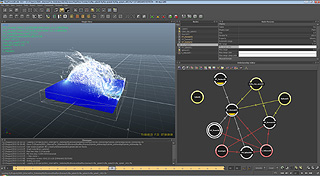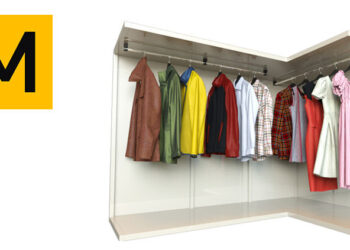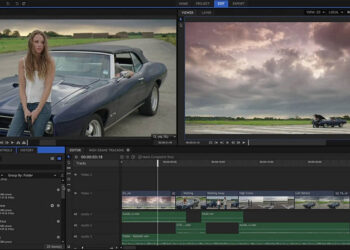Introduction
[specs-box]
RealFlow is a fluid simulation software developed by Next Limit that offers an out-of-the-box simulation tool for creating both large and small scale fluids, ocean surfaces, and rigid body dynamics. Built on over 15 years of research and development, RealFlow 2013 presents its users with a new node-based creation environment.
In this review we will be looking at the latest release of RealFlow, examining the new features it has to offer.
Overview
When talking about visual effects and fluid simulations, the first tool that comes to most people’s mind is RealFlow (RF). Being around for more than 15 years, it has built a reputation of being the go-to software for creating fluid simulations. RF has been used by many studios of all sizes to create effects that can be seen in various blockbuster films like Avengers, 2012, and The Girl With The Dragon Tattoo. RF offers a true 3D environment where users have access to various types of emitters, forces, and fluid settings, that can allow them to create and direct their fluid simulations. Data can then be exported to their 3D package of choice.
Next Limit provides plugins to various 3D packages including 3DS Max, Maya, and Cinema 4D, to name a few. This gives users the ability to transfer data back and forth between RF and their native 3D package. Until the past few releases of Houdini, which now has its own fluid solver, RF was the main go-to software for creating fluids.
The past year or so has allowed RealFlow to really shine, as its main contender, Naiad (now code-named BiFrost), was purchased by Autodesk and taken off the market for further integration into Autodesk software. Currently the only other off-the-shelf toolset that really gives RealFlow any serious competition would be Houdini from SideFX Software, with FXGear’s Flux recently entering the market.
What’s new in RealFlow 2013
RF 2013 brings a lot of new features and enhancements to the table. The biggest and most notable addition is the node-based relationship editor and simulation graphs. Now users have the ability to build and create complex simulations with ease through the use of the node-based interface. Creating emitters, expressions, containers, and daemons through right-click or tab-based menus is a breeze.
The ability to render previews through Next Limit’s Maxwell Renderer is also a new and powerful feature. RF 2013 also offers many improvements to their Hybrido solver, which is used is creating larger scale simulations. In addition to the new base solver for Hybrido, the new splash and foam emitters have seen some refinement, which allows them to simulate much faster than previous releases. Improvements have also been made to RF’s meshing algorithms, which account for thinner, and more detailed meshes. The fracturing tool in RF has also seen some updates that gives users faster simulations and more control. Last, but not least, RF 2013 now offers support for the Alembic file format that offers greater flexibility to your pipeline and provides a very efficient way to manage data interchange between different software packages.












We just picked up RealFlow this week at Reel Pictures. We’re a small studio in Melbourne, Australia. I like that Next Limit have changed up their ‘Learning Licence’ with RealFlow 2013 so it’s much less Restrictive.
We could spend a few months getting to grips with the software using the LE licence, and then received a 10 day full evaluation licence before purchase.The customer support is really good – ‘LuisM’ answered every question we threw at him 🙂